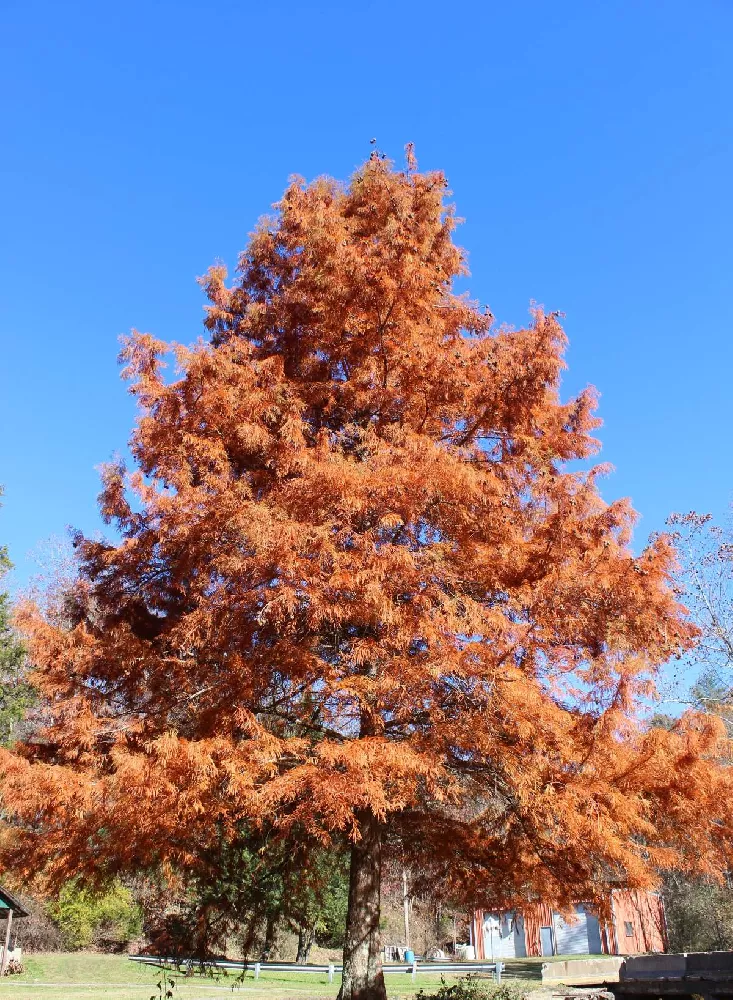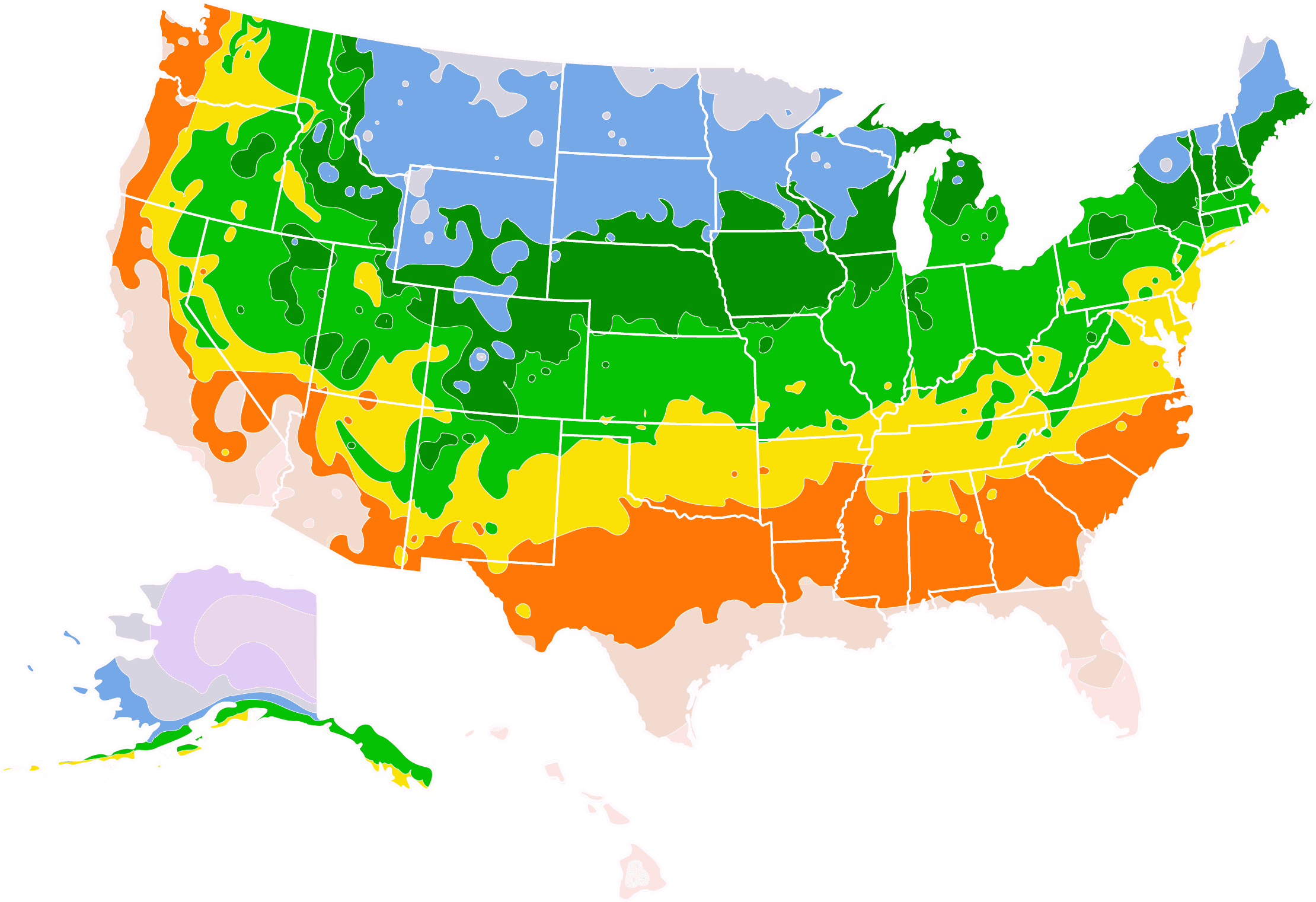- Home >
- Ornamental Trees >
- Dawn Redwood Tree
Dawn Redwood Tree for Sale - Buying & Growing Guide
- Ships in 1-2 days
- 1-Year Warranty Eligible
- Pots or accessories are not included unless specified in the product options.
Shipping Details:
Once your order is shipped, you’ll receive an email with a tracking number and estimated delivery date. Most orders ship immediately, but some items are seasonal and may only ship in spring or fall. These products are noted on the website.
The Dawn Redwood Tree, Metasequoia glyptostroboides, is a cousin to the giant sequoias of the West Coast, and like them, it has presence and grandeur that can elevate and beautify a landscape setting. This fast-growing deciduous conifer has fern-like leaves that are a bright green throughout the growing season before turning vivid orange and apricot in the fall. It has an upright, conical form that gradually broadens out as the tree grows, and interesting, mottled bark that provides winter interest to the garden. The Dawn Redwood is pest and disease-free and needs little pruning or care. Unlike many landscape trees, it thrives in wet spots near ponds or streams and is well-suited to more spacious landscape settings, as it can grow up to 50 or more feet. Here are a few more reasons to consider it for your landscape:
- Grows well in poorly-drained sites.
- Tolerant of clay soil as well as air pollution, making it a good choice for urban areas.
- Resistant to deer and is not bothered by other animals.
Plant Care
Sunlight

Grow your Cherokee Crape Myrtle in an area that receives six hours of daily sunlight or more.
Watering
Water this plant weekly during the establishment period. After establishment, supply water when the first three inches of soil are dry.
Fertilizing

Feed this plant annually in early spring with an all-purpose fertilizer.
Planting instructions
Site your redwood where it will receive at least six hours of sunlight a day. It is not particular about soil type and may be planted in boggy areas. Unpot your sapling and tease out any encircling roots, which can girdle the root ball and slowly kill it. Dig a hole that’s as deep as the root ball and twice as wide. Holding the tree upright and steady, place it in the hole, spreading out the roots. Fill in around it with topsoil, tamping down as you go to eliminate air pockets. Water thoroughly. Apply a two to three-inch layer of organic mulch such as bark chips around the root zone to conserve moisture and hinder weed growth but keep it from touching the trunk to avoid problems with rot.
Watering and nutrients
When newly planted, water your Dawn Redwood every few days. Once you see vigorous new growth, you can taper back watering. Your tree in general will need about an inch of water a week, either from rain or supplemental watering. These redwoods are not heavy feeders, but if you wish to encourage growth, you can apply a light feeding of a balanced, slow-release fertilizer in early spring.
Pollination
The Dawn Redwood tree is monoecious, meaning that a single tree has both male and female reproductive organs. Female cones are less than an inch long and light brown; while male cones are even smaller and round and hang pendulously in groups.
Pruning
Prune out any dead, diseased or damaged limbs from your tree when you see them. Other than this, you do not need to prune your Dawn Redwood.
Pests, diseases and animals
Few pests bother the Dawn Redwood, and they are not prone to disease. If Japanese beetles are common in your region, you may see them eating the foliage. These can be controlled by beneficial insects as well as commercial traps. Spider mites may also be a problem. These trees are resistant to common diseases such as verticillium wilt. They may occasionally show signs of canker infections: brown or wilted foliage and resinated bark. Prune out infected branches, as there is no commercial cure available. Deer may browse on redwoods when they are young, and the cones provide food for squirrels and other small mammals.
Achieving maximum results
Knowing how to properly use a Dawn Redwood in your landscape is one way to achieve maximum results. The key is to understand that these are not small, ornamental trees and can reach a height of 100 feet if healthy and well cared for. They are frequently used in large parks and in some areas, they are planted as street-side trees. They are probably not the best choice, therefore, for a small urban garden. When planting, be sure to keep them 20 feet or more from the nearest building or other plantings, to allow the tree to grow freely to its mature height. One good place to plant the Dawn Redwood is in ground that does not dry out well between rainfalls. The trees can handle wet soil and thus do well on the shoreline of ponds or creeks.
FAQs
How fast do Dawn Redwoods grow?
The Cherokee Crape Myrtle is not only impressive during its summer bloom time, but it can also add ornamental appeal to your garden later in the season too. During early fall, this plant will likely continue to hold a few vibrant flower clusters. As fall progresses, the leaves of this plant tend to turn orange or red. This plant also has bark with red and brown hues that remain attractive year-round.
Where can I grow a Dawn Redwood?
Dawn Redwoods grow beautifully throughout most of the continental U.S. They are hardy in USDA hardiness zones four through eight, which includes the Pacific Northwest and coastal Maine in the north and extends as far south as northern Florida.
How old is the Dawn Redwood?
These trees are an ancient species, and fossil evidence shows that it was common as far back as 150 million years ago. Unfortunately, it is very uncommon now and was in fact thought to be extinct until it was rediscovered in the 1940s in a remote area of China. Currently, it is considered endangered but is rapidly growing in popularity throughout the U.S.
Compare Similar Products
You can't add more Product Name - Product size to the cart.
OK










